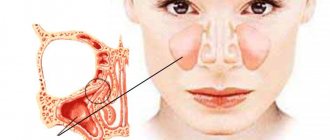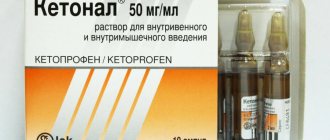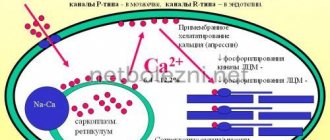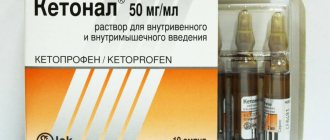Hangover syndrome is a pathological condition that occurs after drinking alcohol, which includes headache, weakness, nausea, dry mouth, sweating, irritability. Oddly enough, even with the same quantity and quality of alcohol consumed, people feel differently the next morning: one is exhausted from a hangover, while the other easily goes to work.
In any case, no one wants to suffer from the unpleasant consequences of fun, so there are a lot of recommendations for getting rid of a hangover.
The quantity and quality of what you drink directly affect your hangover.
In order to figure out which remedies are of any value, we first need to find out what is happening in the body at this time and what can be influenced to improve the situation.
Information sheet
The drug has a number of beneficial properties for the human body. It relieves pain, can lower body temperature and has a calming effect. Basically, patients themselves know what this medication is for. It is used to combat headaches and toothaches, but usually of mild or moderate intensity, as well as other uncomfortable conditions. The medicine can be recommended for use in acute respiratory diseases and high body temperature.
In addition, “tempalgin” has a calming effect on the human nervous system. It helps cope with fear or anxiety. It may also moderately reduce blood pressure. This medication acts very quickly on the human body. Most often, the effect is achieved within 30 minutes to 2 hours. The only form of release is tablets.
Pharmacological properties of the drug Tempalgin
Pharmacodynamics. Tempalgin has a pronounced and long-lasting analgesic and antipyretic effect with a moderate anti-inflammatory effect. Its analgesic effect exceeds the strength and duration of the effect of metamizole. Triacetonamine-4-toluene sulfonate also has a beneficial effect on the emotional component of pain. Metamizole inhibits prostaglandin synthesis by inhibiting COX, has some membrane-stabilizing effect, and inhibits the formation of endogenous pyrogens. Triacetonamine-4-toluene sulfonate exhibits pronounced anxiolytic activity and eliminates anxiety, fear and tension. Reduces motor agitation, has a central N-cholinolytic effect, enhances and prolongs the analgesic effect of metamizole. Pharmacokinetics. Metamizole sodium is quickly and completely resorbed in the gastrointestinal tract, creating maximum plasma concentrations on average 30–120 minutes after administration. It partially binds to blood plasma proteins and undergoes intense metabolism in the liver. Metamizole is rapidly broken down to 4-methylaminoantipyrine (MAA) by non-enzymatic hydrolysis. Further metabolism occurs from active 4-aminoantipyrine (AA) to 4-acetylaminoantipyrine (AAA). As a result of another method of cleavage through incomplete oxidation of MAA, the compound 4-formylaminoantipyrine (FAA) is formed. Based on the determination of these metabolites, 65–70% of the administered dose is confirmed. The main metabolite AAA is excreted 90% by the kidneys and 10% is excreted in the bile, the half-life is about 10 hours. Depending on age, the half-life of MAA increases from 2.6 hours (age 21–30 years) to 4.5 hours (age 73 -90 years). Triacetonamine-4-toluene sulfonate is intensively resorbed in the upper gastrointestinal tract and creates therapeutic plasma concentrations 30 minutes after administration.
Will it help with headaches?
"Tempalgin" perfectly relieves symptoms of headaches. In addition, the drug should be taken if you have symptoms such as:
- Toothache
- Migraine
- Neuralgia
- Muscle pain
- Joint pain
- Mild abdominal pain
In combination with drugs that relieve spasms, it can be prescribed to treat various colics. It is used as an additional agent in the treatment of infectious and inflammatory diseases.
Tempalgin tablets p/o 500mg/20mg No. 10x1
Name
Tempalgin tablet p/o 500 mg/20 mg in blister pack. in pack No. 10x1
Description
Round, biconvex, film-coated tablets, green in color, odorless.
pharmachologic effect
Tempalgin is a combination drug that contains the active substances metamizole sodium and triacetonamine-4-toluene sulfonate. It has a pronounced and long-lasting analgesic effect due to the non-narcotic analgesic metamizole sodium, which suppresses the synthesis of prostaglandins. Triacetonamine-4-toluene sulfonate reduces motor agitation and has a calming effect.
Indications for use
- Acute pain after injury or surgery
- Colic
- Pain due to tumor diseases
- Other acute or chronic severe pain when other therapeutic measures are contraindicated or ineffective
- High temperature that cannot be controlled by other means.
Contraindications
- In case of hypersensitivity to metamizole and other pyrazolone derivatives or pyrizalidin (including patients who have developed agranulocytosis after using these substances) or any other ingredients of analgin.
- In patients with a history of aspirin asthma or analgesic intolerance syndrome (urticaria, angioedema), in patients with bronchospasm or other forms of anaphylactoid reactions to salicylates, paracetamol or other non-narcotic analgesics such as diclofenac, ibuprofen, indomethacin and naproxen).
- In case of impaired bone marrow function (for example, after treatment with cytostatics) or diseases of the hematopoietic system.
- Hereditary hemolytic anemia associated with deficiency of glucose-6-phosphate dehydrogenase.
- Patients with systolic blood pressure below 100 mm Hg.
- In acute intermittent porphyria (risk of an attack of porphyria).
- In the last trimester of pregnancy.
- During breastfeeding.
- If acute surgical pathology is suspected.
- Children under 15 years of age.
special instructions
Use extreme caution when using Tempalgin contains the pyrazolone derivative metamizole and has a rare but life-threatening risk of shock and agranulocytosis. Patients with atopic bronchial asthma and hay fever have an increased risk of developing hypersensitivity reactions. Patients with anaphylactoid reactions to metamizole are most vulnerable to the entire group of non-narcotic analgesics. Patients with anaphylactoid reactions or other immunologically mediated reactions (eg, agranulocytosis) may react in the same way to other pyrazolones and pyrazolidines. When using the drug, agranulocytosis may develop. Therefore, if an unmotivated increase in temperature, chills, sore throat, difficulty swallowing, stomatitis, as well as inflammation of the external genitalia and anus is detected, immediate discontinuation of the drug is necessary. When choosing a route of administration, it is important to remember that parenteral administration of analgin is associated with an increased risk of anaphylactic or anaphylactoid reactions. The risk of potentially severe anaphylactoid reactions to analgin increases significantly in patients with:
- asthma syndrome on analgesics or angioedema on non-narcotic analgesics;
- bronchial asthma, especially with concomitant rhinosinusitis and nasal polyps;
- chronic urticaria;
- intolerance to dyes (for example, tartrazine) and preservatives (for example, benzoates);
- alcohol intolerance. These patients may react to alcoholic beverages even in small quantities with symptoms such as sneezing, watery eyes, and severe facial flushing. Such alcohol intolerance may be a sign of previously diagnosed asthma to analgesics.
When prescribed to patients with acute cardiovascular pathology, careful monitoring of hemodynamics is necessary. Use with caution in patients with blood pressure levels below 100 mmHg. Art., with myocardial infarction, multiple trauma, with anamnestic indications of liver and kidney diseases (pyelonephritis, glomerulonephritis), during treatment with cytostatics, with chronic alcoholism, a burdened allergic history, blood diseases. Analgin can lead to hypotensive reactions. These reactions may be dose dependent. These reactions usually occur with parenteral rather than enteral administration. The risk of developing such reactions increases:
- with rapid intravenous administration;
- in patients with previous hypotension, dehydration or dehydration, unstable blood pressure, or incipient circulatory failure (for example, in patients with multiple traumas or a heart attack);
- in patients with high fever.
These patients require careful evaluation and close monitoring. Preventive measures (such as circulatory stabilization) may be necessary to reduce the risk of hypotensive reactions. In exceptional cases, analgin can be used in patients in whom a decrease in blood pressure is unacceptable, for example, with severe coronary heart disease or corresponding stenosis of the cerebral arteries. Use is possible only after careful monitoring of hemodynamic parameters. Patients with renal or hepatic insufficiency should take analgin only after a careful assessment of the benefits, risks and necessary precautions. It is necessary to consult with the patient before administering analgin. In patients with an increased risk of anaphylactic reactions, analgin can be used only after a thorough analysis of the possible risks in relation to the expected benefits. When taking analgin in such cases, the patient should be carefully monitored to ensure medical care and emergency preparedness. Important information about some of the components included in the composition The drug contains wheat starch, which is acceptable for people with celiac disease. Patients with a wheat allergy (other than celiac disease) should not use this drug.
Use of other drugs
Please tell your doctor or pharmacist if you are taking or have recently taken other medicines, including those taken without a prescription. Treatment may be affected by the simultaneous use of drugs that suppress the central nervous system, painkillers, anti-inflammatory drugs, contraceptive drugs, coumarin anticoagulants (reduce blood clotting), chlorpromazine (for the treatment of mental illnesses), chloramphenicol (an antibiotic), cyclosporine (used for tumor diseases ), sleeping pills.
Use with food and beverages
It is preferable to take the tablets after meals with plenty of water. During treatment with Tempalgin, drinking alcohol is not recommended, as the side effects of the drug may increase.
Pregnancy and breastfeeding
Ask your doctor or pharmacist for advice before using any medicine. Pregnancy It is not recommended to use Tempalgin during pregnancy. Breastfeeding The use of the drug during breastfeeding is undesirable. If treatment with the drug is required, breastfeeding should be discontinued.
Driving vehicles and working with machinery
When using Tempalgin, do not drive vehicles or operate machinery, as this drug reduces the ability to concentrate and slows down conditioned reflexes.
Mode of application
The dosage depends on the intensity of pain or fever and individual sensitivity to metamizole. In principle, the minimum dose that successfully controls pain and/or fever should be selected. It usually takes 30 to 60 minutes after oral administration before the effect occurs. Adults and adolescents aged 15 years (> 53 kg) up to 1000 mg of metamizole per dose (2 tablets). In case of insufficient effect, it is possible to increase the single dose depending on the maximum daily dose - up to 4 times a day (exceeding the daily dose is not permissible). Elderly In elderly patients, the dose should be reduced since the elimination of metabolites may be delayed. General condition and decreased creatinine clearance In patients with reduced status and decreased creatinine clearance, the dose should be reduced, since the elimination of metamizole metabolic products may be prolonged. Kidney and liver function With impaired renal and liver function, the rate of elimination is reduced; multiple doses and high doses should be avoided. Dose adjustment is usually not required. Route of Administration The route of administration is based on the desired therapeutic effect and the patient's condition. In many cases, oral administration is sufficient to provide satisfactory effect (other dosage forms of metamizole are available for intravenous or intramuscular administration to achieve rapid effect, but, usually, parenteral administration of the drug is associated with a higher risk of anaphylactic or anaphylactoid reactions). The tablets should be swallowed whole with plenty of liquid (for example, 1 glass of water). Duration of treatment The duration of treatment depends on the type and severity of the disease and is determined by the doctor. Long-term treatment with metamizole requires regular monitoring of blood counts, including counting of differentiated leukocytes. If you take more than the required dose of the drug, you may experience: nausea, dizziness, abdominal pain, weakness to the point of loss of consciousness, severely low blood pressure to the point of shock (loss of consciousness with low blood pressure), and abnormal heart rhythms . If some of these symptoms appear, you should immediately stop using the drug and consult your doctor! If you miss a dose of Tempalgin If you miss one dose, take it as soon as possible. If it is near time for your next dose, take it as usual. Do not take a double dose to make up for a missed dose. Continue to use the medicine according to the directions in this leaflet. If you have any additional questions about using this medicine, ask your doctor or pharmacist.
Possible side effects
The frequency of possible side effects listed below is determined as follows: very common (> 1/10), common (> 1/100 to 1/1000 to 1/10000
Storage conditions
In the original packaging at a temperature not exceeding 25 °C in a place protected from moisture. Keep out of the reach of children. Medicines should not be disposed of in a sewer or household waste container. Ask your pharmacist how to dispose of unused medications. These measures will contribute to environmental protection.
Best before date
Shelf life: 4 (four) years. Should not be taken after the expiration date marked on the package.
Compound
Each film-coated tablet contains the following active ingredients: metamizole sodium monohydrate 500 mg, triacetonamine-4-toluetsulfonate 20 mg. Excipients: wheat starch, microcrystalline cellulose (type 101), magnesium stearate, talc, povidone K 25. Shell: Opadry II green 85 F21526 (polyvinyl alcohol - partially hydrolyzed, macrogol 3350, talc, titanium dioxide (E 171), aluminum varnish based on quinoline yellow dye (E 104), aluminum varnish FCF based on brilliant blue dye (E 133).
Package
Primary packaging: 10 film-coated tablets are packed in a PVC/aluminum foil blister. Secondary packaging: 1 (one) or 2 (two), or 10 (ten) blisters are packaged together with a consumer leaflet in a cardboard box.
Conditions for dispensing from a pharmacy chain
Over the counter.
Buy Tempalgin tablet p/o 500mg/20mg in blister pack. in pack No. 10x1 in the pharmacy
Price for Tempalgin tablet p/o 500mg/20mg in blister pack. in pack No. 10x1
Instructions for use for Tempalgin tablet p/o 500mg/20mg in a blister pack. in pack No. 10x1
Why can't you use
The drug is prohibited for use in the following body conditions:
- Severe kidney failure
- Low blood pressure
- Severe liver failure
- Asthma due to allergy to aspirin
- Chronic heart failure
- Problems with hematopoiesis
- Individual intolerance
Why are there allergies?
Any drug always has undesirable effects. Specifically, Tempalgin does not often have side effects on the body. Usually, this occurs only against the background of long-term use of the drug. They manifest themselves in organ systems as follows:
- Burning sensation in the epigastrium, increased levels of ALT and AST, jaundice, increased bilirubin, cholestasis.
- Increased symptoms from the central nervous system, up to the occurrence of hallucinations.
- Changes in blood pressure, increased heart rate, and the appearance of cyanosis.
- Renal dysfunction
- Allergy in its various manifestations.
Interactions of the drug Tempalgin
The effect of metamizole potentiates the use of tricyclic antidepressants (imipramine, amitriptyline), oral contraceptives and allopurinol: they inhibit enzymes of the liver system that metabolize drugs, as a result of which the biotransformation of metamizole slows down and its toxicity increases. Barbiturates and phenylbutazone reduce the severity and shorten the duration of the pharmacodynamic effects of metamizole due to the induction of liver enzymes. Metamizole reduces the concentration of cyclosporine in the blood plasma. Chloramphenicol and other drugs that inhibit hematopoiesis, through an additive effect, enhance the myelotoxic effect of metamizole. Alcohol enhances the effect of both components of the drug. Triacetonamine-4-toluene sulfonate potentiates the effect of hypnotics, general anesthetics, narcotic and non-narcotic analgesics.
How to take with other medications
When combined with classic sedatives and tranquilizers, the patient's pain relief increases. Co-administration with phenothiazide derivatives usually causes an increase in body temperature. The patient may develop leukopenia when prescribed in parallel with cytostatics. There is no exception to increased toxic effects when taken with non-steroidal anti-inflammatory drugs or oral contraceptives. Increased excretion from the body occurs under the influence of taking H2 receptor blockers.
Special instructions for the use of the drug Tempalgin
With longer treatment with Tempalgin, systematic monitoring of the blood picture, including the leukocyte formula, is necessary. In patients with asthma, hay fever, Quincke's edema, chronic respiratory tract infections, as well as in patients with hypersensitivity to analgesic and antirheumatic drugs (analgesic intolerance), as well as to other drugs or foods, there is a risk of allergic reactions and asthmatic attacks. Do not use simultaneously with alcohol due to increased effect. Use with caution for liver or kidney diseases. Due to the presence of wheat starch in the drug, Tempalgin should be prescribed with caution to patients with celiac disease (gluten enteropathy). Triacetonamine-4-toluene sulfonate reduces the ability to concentrate and slows down conditioned reflexes, so the drug should not be used by drivers and persons whose work requires a high speed of mental and physical reactions.
The most popular analogue
These two drugs differ significantly in their composition. Indications for their use also differ. In the presence of a stronger and more persistent pain syndrome, preference should be given to “pentalgin”, since it contains a larger number of main active ingredients, which are more effective in comparison with “tempalgin”. As for pricing policy and production, these two medicines are practically no different from each other. They are both very high quality and relatively inexpensive drugs.
Tempalgin drug overdose, symptoms and treatment
The clinical picture of overdose is caused by the following main syndromes: gastrointestinal (nausea, vomiting, and at very high doses - hematemesis and melena); cerebral (Menière-like phenomena, tinnitus, somnolence, apnea, coma with hypotension and tonic-clonic convulsions); hematological (agranulocytosis, aplastic anemia, hemorrhagic diathesis); metabolic (metabolic alkalosis); renal (from oliguria to anuria); toxic-allergic (vesicular-urticarial and petechial, sometimes measles- or typhoid-like rash; some patients may develop toxic-allergic shock). Depending on the prevalence of a particular syndrome, gastric lavage, symptomatic treatment, forced diuresis, mechanical breathing are carried out, laxatives, gastroprotective, anti-shock and anti-hypovolemic drugs are prescribed.







